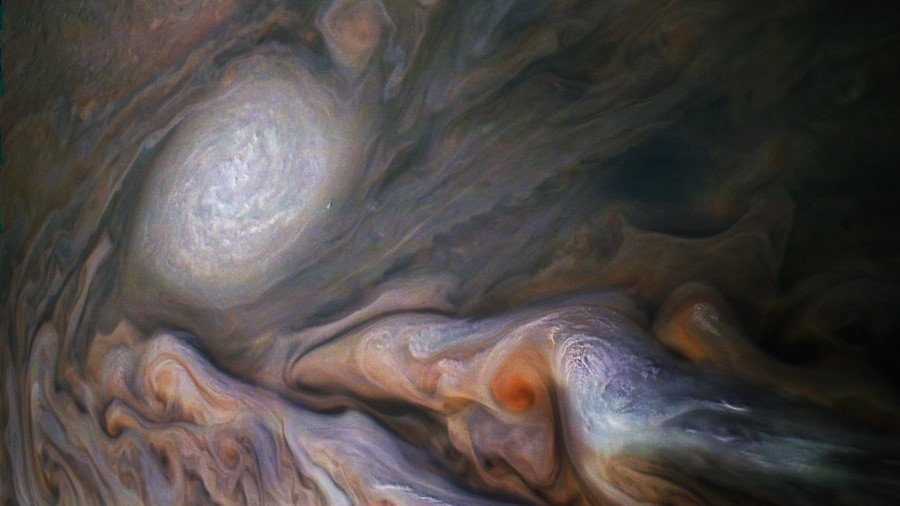NASA’s Juno spacecraft captures incredible cosmic ‘dolphin’ in Jupiter’s clouds (PHOTOS)

Every so often NASA releases photos that are so otherworldly that they look as if they were whipped straight off a painter’s canvas. The latest batch captured a ‘dragon’s eye’ and a cosmic ‘dolphin’ swirling in Jupiter’s clouds.
The images were captured by the Juno spacecraft which is currently orbiting the solar system’s largest planet. The photos were taken in late October as Juno performed its 16th close flyby of the gas giant. At the time the ship was cruising about 7,000 kilometers (4,400 miles) above the planet's cloud tops.
The photos were snapped in Jupiter's North-North Temperate Belt. The raw images were released by NASA and processed by citizen scientists Seán Doran and Gerald Eichstädt.
READ MORE: 3D flyover of Jupiter reveals planet’s menacing cyclones (VIDEOS)
NASA's Jet Propulsion Laboratory compared the stunning atmospheric display seen in one of the images to a dragon's eye.
The large oval ‘eye’ is actually an anticyclonic storm, meaning that winds in the outer edge of the storm are blowing in an opposite direction to the surrounding air mass.
Another image captured a formation that bore a striking resemblance to a dolphin swimming in the swirling clouds. Doran posted a series of stills of the cosmic creature on Twitter this week.
A dolphin swims in Jupiter's sky.@NASAJuno Perijove 16 [ Swift/Doran ] pic.twitter.com/PZhlx3a7I2
— Seán Doran (@_TheSeaning) November 8, 2018
Juno was launched in 2011 and finally arrived at Jupiter nearly five years later in July 2016. It is flying above the planet seeking to discover new information about its origins, structure, atmosphere, and magnetosphere.
READ MORE: Violent cyclones pictured in latest trove of NASA Jupiter images
It was due to complete its task earlier this year, however, NASA extended its lifespan to 2021. When it does finally conclude its mission Juno will plunge into Jupiter’s atmosphere and meet a fiery end.
Like this story? Share it with a friend!
















